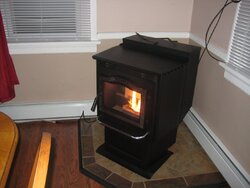As we are approaching the end of the burn seasons (soon I hope) I wanted to ask about best practices to maintain the stove during the off season. It looks like I will end up burning almost 6 tons this season, and I want to make sure I can repeat that next year 
What do you do at the end of the season: just shut the stove down and wait for the big one before the next burn season, or do you perform a big clean and then shut it down?
How do you handle rust? I see some people close the vent, but with what? how do to close your OAK? is that really needed?
I see some people I using DampRid. is that helpful? if yes, what DampRid type exactly do you use?
Any other tips and tricks on how to keep the stove in good shape during the off season will be appreciated!

What do you do at the end of the season: just shut the stove down and wait for the big one before the next burn season, or do you perform a big clean and then shut it down?
How do you handle rust? I see some people close the vent, but with what? how do to close your OAK? is that really needed?
I see some people I using DampRid. is that helpful? if yes, what DampRid type exactly do you use?
Any other tips and tricks on how to keep the stove in good shape during the off season will be appreciated!







